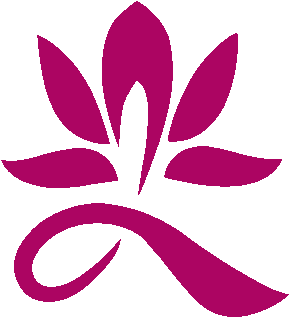[Health Bulletin] Epidemic Prevention Special – Practicing Epidemic Prevention Alongside a “Healthy and Sustainable Lifestyle”
As the COVID-19 pandemic continues to spread across many countries, Taiwan stands out for its effective containment measures. From an educational perspective, the Ministry of Education and universities have collaborated to implement comprehensive campus epidemic prevention strategies. These include forming epidemic prevention task forces, enforcing routine preventive measures, planning for class suspensions, makeup lessons and class resumption, adopting online and remote teaching, and executing health management protocols—all aimed at ensuring a safe and stable learning environment for students.
This moment also presents an ideal opportunity for interdisciplinary teaching. Educators are encouraged to integrate epidemic prevention themes into their professional course designs. Doing so not only empowers teachers to exercise professional autonomy, but also fosters curriculum reflection, real-life connection, and action-oriented learning outcomes in epidemic prevention.
Taking Fo Guang University’s Department of Future and Leisure Industry as an example, one can first identify the discipline’s core characteristics and course content, and then apply the STEEPLER framework to align the curriculum with the department’s academic field. Epidemic prevention can be integrated into professional courses through the following methods:
-
Integrated Activities – Due to the nature of the subject, epidemic-related topics are introduced in short 5–10 minute segments.
-
Thematic Unit Integration – For fields directly related to public health, epidemic topics are fully embedded into existing course units.
-
Dedicated Unit – A standalone unit is designed specifically around epidemic prevention content.
For courses closely related to epidemic topics, unit integration or dedicated units are recommended to reinforce the relationship between subject matter and public health. For other disciplines, integrated activities can still be effective in incorporating cognitive, affective, and skill-based objectives through topic immersion. By understanding the pandemic, teaching prevention strategies, and practicing epidemic resilience, students also develop global awareness and critical thinking on health issues.
Examples of thematic analysis using the STEEPLER framework:
-
Social: Racial discrimination during the pandemic; cultural differences in personal hygiene practices leading to social tensions.
-
Technological: Development of health insurance systems, rapid testing, antiviral medications, vaccines, health management, and preventive healthcare.
-
Economic: Impact on airlines, tourism, hospitality, retail, and transportation industries; response strategies and recovery plans.
-
Environmental: Exploring the interconnected health of humans, animals, and ecosystems; roles of disease prevention, animal quarantine, pollution control, and biodiversity conservation.
-
Political: Geopolitical tensions and opportunities caused by the pandemic, such as cross-strait relations, refugee issues, and domestic vs. international political dynamics.
-
Legal: New laws addressing the pandemic’s impact on the economy and society, such as relief policies and employment protections.
-
Ethical: Dilemmas between altruism and self-interest, such as whether to sacrifice a few for the greater good or to cull infected animals—what is ethically right?
-
Religious: Exploring the spiritual dimensions of pandemics, with reflections across different faiths on karma, suffering, and the origin of calamity.
Epidemic Prevention and the Practice of a “Healthy and Sustainable Lifestyle”
The practice of epidemic prevention ties deeply into a broader logic of sustainable living. It enhances personal and community immunity and resilience (Survival), promotes physical, mental, and spiritual well-being (Life), encourages the conservation of biodiversity (Ecology), relies on healthy ecosystems to support economic stability (Production), and ultimately leads to a high-quality and fulfilling life (Living).
Hence, the formula: Survival + Life + Ecology + Production + Living = A Healthy and Sustainable Lifestyle
A practical case of this logic in action is the Council of Agriculture’s Hualien District Agricultural Research and Extension Station, which promotes agriculture-based therapy. By combining natural landscapes, ecological resources, agricultural production, rural culture, and hands-on experiences, this initiative provides therapeutic spaces for the public, improves national well-being, and boosts the economy.
Assistant Professor Hung-Teng Chou has been an advocate for agroforestry therapy, highlighting the healing power of nature on human health. His model outlines a continuum of care:
-
Restorative – for relieving everyday fatigue
-
Preventive – for minor discomforts and disease prevention
-
Therapeutic – for treating illnesses or special conditions
Forests, in particular, offer mental and physical health benefits such as anxiety relief, blood pressure reduction, and immune enhancement.
From 2017 to 2019, Professor Chou launched several intergenerational and agroforestry therapy programs, such as:
-
Toucheng Farm – Through food and farming education, it promotes social and environmental care, cooperative learning, and the Confucian spirit of benevolence.
-
San-Fu Farm – Featuring moss ball therapy, outdoor tours, and organic pomelo picking for corporate family groups, enhancing teamwork and connection with nature.
-
Na Shan Na Gu (That Mountain That Valley) – Outdoor experiential education including river drifting, stream tracing, light meals, and camping, offering immersive natural therapy in the unique landscapes of southern Yilan.

 Department of LOHAS Industry, FGU
Department of LOHAS Industry, FGU